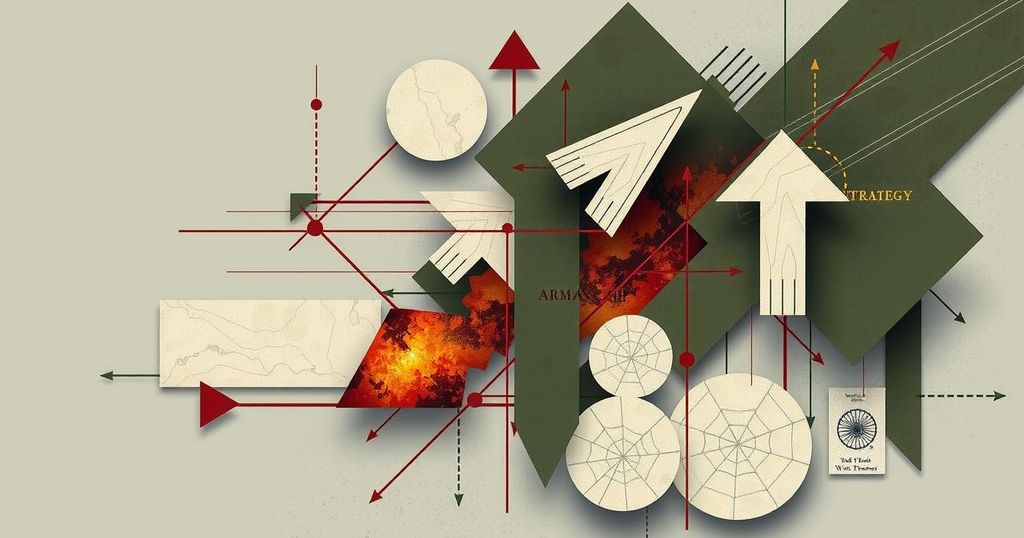U.S. Airstrikes Target Houthi Forces as Trump Flags Iran Responsibility

U.S. airstrikes targeted and destroyed key Houthi military assets in Yemen, with President Trump indicating Iran’s accountability for Houthi actions. Casualties reported include over 50 Houthis, while striking officials emphasize the need for future military efficacy. Amidst rising tensions, the effectiveness of U.S. strategies in curtailing Houthi threats while managing Iranian influence remains in question.
Recently, U.S. airstrikes targeted Houthi military assets in Yemen, destroying drone and missile systems. Joint Staff Director for Operations Lt. Gen. Alexus Grynkewich reported significant military casualties among the Houthis, with no credible civilian harm observed. The strikes successfully hit over thirty targets, including training sites and weapon storage facilities, thereby degrading Houthi capabilities.
Yemen’s Houthi rebels have reported 53 fatalities, including five children, amidst ongoing attacks commenced over the weekend. Pentagon spokesperson Sean Parnell emphasized that the strikes were meant to convey serious repercussions for attacks on American troops while asserting that this was not an open-ended offensive or a campaign for regime change.
President Donald Trump made it clear that while the Houthis were the primary focus, Iran would be held accountable for any retaliatory actions. He stated, “Any further attack or retaliation by the ‘Houthis’ will be met with great force… Every shot fired by the Houthis will be looked upon, from this point forward, as being a shot fired from the weapons and leadership of IRAN.”
In light of recent geopolitical tensions, the Houthis have announced an escalation of their attacks in the Red Sea, aiming to influence Israel’s humanitarian actions in Gaza. While Trump initiated a diplomatic approach by reaching out to Iran for nuclear discussions, the Iranian response was dismissive due to Trump’s renewed sanctions rhetoric.
Continued strikes by U.S. forces are touted to persist until the Houthi threat is eradicated, but the definition of ‘elimination’ raises concerns. The U.S. military’s deployment intentions to Yemen remain ambiguous, as stated by Parnell, emphasizing the need for strategic ambiguity to keep adversaries uncertain.
Research fellow Zineb Riboua provided insights, noting that the effectiveness of U.S. operations hinges on whether Houthi capabilities were genuinely weakened, especially considering Iran’s ongoing support. The recent military actions have deterred Houthi strikes against American naval assets, but the U.S. response has been limited thus far.
Expert commentary reflects diverging opinions on whether U.S. resources should be expended combating the Houthi forces, particularly given their minimal direct threat to American interests. Former military officials reiterated that decisive action against Iran is crucial and that kinetic solutions alone may not suffice to address underlying ideological conflicts.
As Iran’s nuclear activities continue, with uranium enrichment nearing alarming levels, the potential for a nuclear weapon remains a critical concern that has not been adequately addressed in broader military strategies.
The recent U.S. airstrikes against the Houthi forces underscore a shift in military strategy towards greater engagement in the Middle East. With President Trump signaling that Iran will bear responsibility for Houthi actions, the situation remains precarious. While military operations continue, the effectiveness of these actions in curbing Iranian influence and protecting U.S. interests raises numerous questions about the viability of such a strategy.
Original Source: www.foxnews.com








